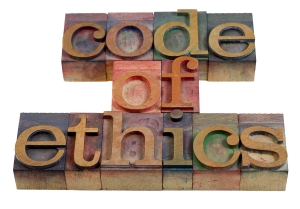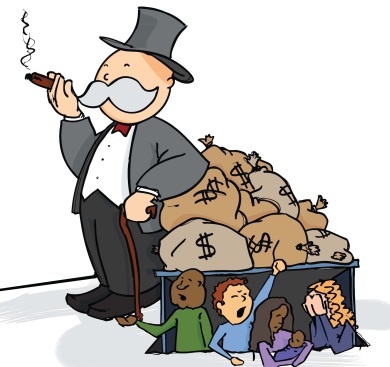 1. According to the group of codes of ethics discussed by the Society of Professional Journalists’ Code of Ethics, the tenet that “journalism should be honest, fair, and courageous in gathering, reporting and interpreting information,” is upheld the most because it defines the objective of the field of journalism itself. This is exemplified in any traditional news source in which news is delivered in an objective and neutral manner.
1. According to the group of codes of ethics discussed by the Society of Professional Journalists’ Code of Ethics, the tenet that “journalism should be honest, fair, and courageous in gathering, reporting and interpreting information,” is upheld the most because it defines the objective of the field of journalism itself. This is exemplified in any traditional news source in which news is delivered in an objective and neutral manner.
On the other hand, the tenet that describes journalists should “make certain that headlines, news teases and promotional material, photos, video, audio graphics, sound bites and quotations do not misrepresent.” This is more difficult to uphold in professional journalism because as we see in today’s news reporting, headlines are relied on to capture attention and today this depends on ones the sometimes mislead or skew the context of a story in order to get people to read news.
As the reading suggests, professional neutrality is one of the six moral values that speak to the core professional value of journalism. However, this is violated by the growing trend of eye-catching headlines trying to battle other news sources for readers’ attention. This is especially prevalent on Internet sources, whose captions demand an easy click to suck readers into the content of their articles.
2. The line between truth-bending narratives and responsibility to ethics is blurred because of sensationalism that comes with news these days. As Griner point out in his article, sports journalism is a specific field that is shaken by this approach to reporting that favors stories that sell rather than tell. Articles are produced with the intention to attract attention through narratives, which is bending the way we accept and understand information. As a result, people want to buy into narratives that spark interest “turning the fiction into a widely accepted reality.”
The impact of skewed stories can be illustrated in the realm of politics as well since the line between entertainment and news reporting is similarly being blurred. In the case of news entertainment, shows like Saturday Night Live frame stories with embedded comedy in order to attract the attention of viewers to their stories. For example, when Tina Fey portrayed Sarah Palin during a skit where she delivered the famous line, “I can see Russia from my house,” people genuinely believed that Palin had said this statement when in reality it was merely Fey’s representation of Palin.
This describes how sensationalizing stories can lead to repercussions on the masses that are exposed to such information. Moreover, with the fast-moving pace of the Internet and the potential for news to go viral, it is easy for truth bending narratives rather than factual information to makes its way to anyone on the World Wide Web. So, I believe that this kind of journalism is damaging to the reputation of journalism and defies the integrity of it, which is to deliver truthful and objective news to the public.

